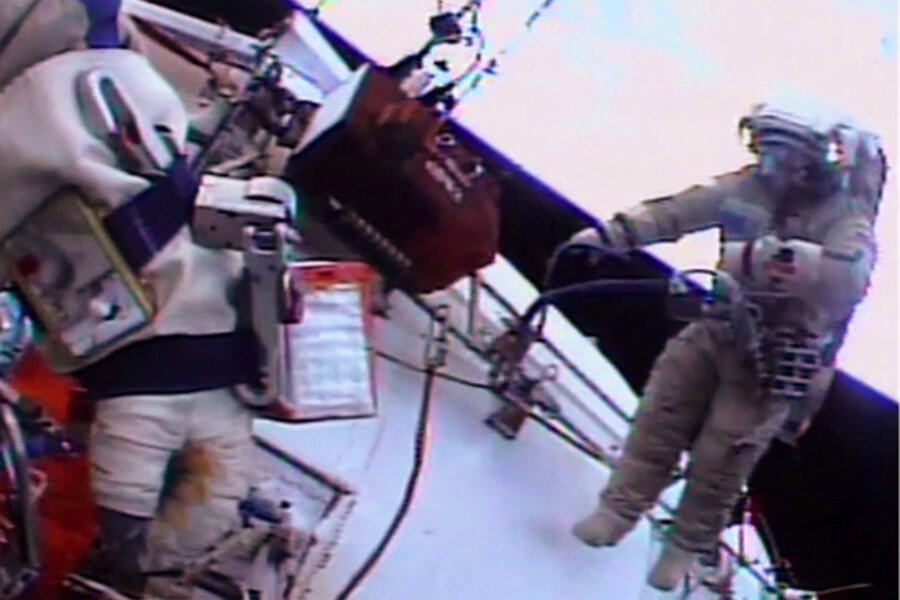Say cheese! Space station cameras now looking at us in high-def.
Loading...
The fourth spacewalk from Expedition 38, performed by Commander Oleg Kotov and Flight Engineer Sergey Ryazanskiy, wrapped up the installation of two high-definition cameras that experienced connectivity issues last month. A spacewalk on Dec. 27 tried to resolve the issue, but ongoing technical problems kept them from finishing.
After exiting the Pirs docking compartment, the men headed to the Zvezda service module, where they installed a high-resolution video camera and a medium resolution still camera to capture Earth imagery. The high-res camera checked out, but the medium-resolution camera again experienced telemetry issues.
Dr. Kotov and Dr. Ryazanskiy also retrieved scientific gear outside the station’s Russian segment.
Their spacewalk lasted for 6 hours and 8 minutes, wrapping up at 3:08 p.m. EST yesterday (Jan. 27). The spacewalk a month before lasted two hours longer, clocking in at 8 hours and 7 minutes. Though they failed to complete the cameras' installation, they did set the record for the longest Russian spacewalk. The previous record-holders were Expedition 36 Flight Engineers Fyodor Yurchikhin and Alexander Misurkin, who conducted a 7 hour and 29 minute excursion on Aug. 16.
On Dec. 27, Kotov and Ryazanskiy installed the cameras, but then had to remove them when Russian flight controllers on the ground reported that they could not receive necessary telemetry information.
The cameras are part of a commercial agreement between a Canadian firm and the Russian Federal Space Agency. Their goal is to provide views of Earth from the ISS for Internet-based subscribers. The Canadian Broadcasting Corporation notes that the still camera has a resolution of five square meters, and the video camera has a resolution of one square meter.
The spacewalkers also retrieved a cassette container attached to Pirs, part of a materials exposure experiment. They then removed a worksite interface adapter attached to a portable data grapple fixture on the Zarya cargo module. The adapter removal work should ensure that future operations with the Canadarm2 robotic arm will not be impeded.
This was the 178th spacewalk in support of space station assembly and maintenance, totaling 1,121 hours, 52 minutes. This was also the first spacewalk of 2014. It is the sixth spacewalk in Kotov’s career and the third for Ryazanskiy. Both spacewalkers wore Russian Orlan spacesuits bearing blue stripes.
The first two spacewalks were conducted Dec. 21 and Dec. 24 by NASA Flight Engineers Rick Mastracchio and Mike Hopkins. They removed and replaced a degraded ammonia pump module to restore the station’s cooling system.








